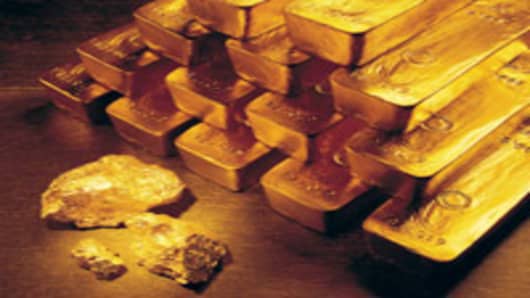The ratings company issued a stark warning to bond investors exposed to the region's banks. In a nutshell, demographic demands (Europe's population is ageing fast, its birth rate is plunging and its retirement benefits are increasing) have pushed the European project ever-Eastward, bringing Poland, Hungary and the Czech and Slovenia Republics into the fold four years ago, with Bulgaria and Romania following in 2007.
With enlargement has, of course, come economic and monetary expansion; Europe's banks have lent billions to lift the region's prospects, lifting foreign currency debt-to-GDP ratios from an aggregate 30 percent in 2000 to a current 47 percent.
Currency declines, according to Credit Suisse, could take that figure to 65 percent. Put another way: the region’s on the hook for $1 trillion -- a fifth of it due for refinancing this year.
That might be a task too far when emerging Europe is expected to contract by as much as 10 percent and currencies like the Polish Zloty (down 15 percent against the Euro) and the Czech Koruna (down 13 percent) continue to free-fall. Add to that the fact that the US Treasury is set to flog $2 trillion in paper at the same time.
Hungary's failure to stem the Forint’s slide with interest-rate hikes last year probably means the region's other central banks won't be tempted down a similar path.
Okay, then, what do you do if you're a central bank boss in an emerging European economy that's facing a funding crisis worse than witness in Asia in the 1990s?
Call in the IMF? Maybe. But the Fund has already lent $40 billion last year and, despite it expanded mandate, may struggle to coordinate a large-scale rescue in Eastern Europe without increased member support (including Japan, which isn't exactly flush with extra cash these days after teeing-up a 12.7 annualized contraction in GDP this week).
Burn foreign-exchange reserves to support your tanking currency? It hasn't helped Russia, which has run through more than a third of what was once the third-biggest stockpile in the world, only to see the Rouble touch 11-year lows against the dollar.
So, what’s left? Gold, that's what. Central and Eastern Europe are sitting atop 730 metric tonnes of bullion, with a current market value of $259 billion. The IMF needs member approval to shift it 400-plus tonnes and Western European banks have cut a deal to limit sales until next year.
They'd have to be tempted: commodity prices are sitting at 6-year lows while Gold's climb continues apace. At $1,000 an ounce, the price spread, and the lure of hard currency, might be too much to resist.
Gold is priced – and therefore monetized – in dollars. Gold sales should create a further bid for the buck, which is already up more than 8 percent this year.
Of course, the banks would be insane to flog of their precious metal holdings, and would thus still require the support of their European brethren, putting further stresses on the broader euro zone balance sheet just as European Central Bank President Jean-Claude Trichet and his on-message colleagues dampen bond market expectations of deep rate cuts and quantitative easing.
In short, the euro zone government bond rally will stall, the dollar rally will continue and Treasuries are still your safest play for capital preservation and predictable returns.


